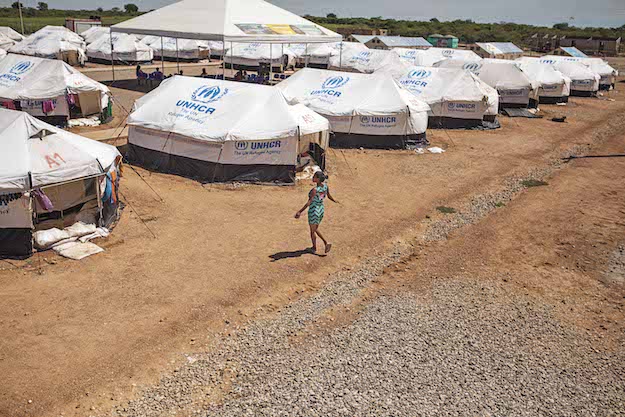This article is adapted from AQ’s special report on migration
Migration has been an integral part of Latin America, but until recently it was generally a movement out of the region. Throughout the second half of the 20th century and well into the first decade of the 21st, millions of Latin Americans moved to the developed North. But in the last decade, a set of particularly acute displacement crises — especially in Venezuela and Central America — has reversed the trend, with millions of Latin Americans heading to neighboring countries and putting down roots.
More than 4 million Venezuelans have moved to almost every country in the region, with the largest numbers in Colombia, followed by Peru, Chile and Ecuador; another 100,000 Nicaraguans moved to Costa Rica; and tens of thousands (perhaps hundreds of thousands) of Hondurans, Guatemalans and Salvadorans have chosen to stay in Mexico as it becomes harder to move to the United States.
But if migration is a global issue, the picture in Latin America is conspicuously different.
In the rest of the world, displacement crises follow a common template. When people flee their country because of a major conflict, the collapse of state functions or just generalized violence, U.N. agencies move in to assist the countries receiving the migrants. Most of those displaced are officially designated as refugees, and the international community mobilizes to build camps and provide food, shelter and schools for the refugees.
Latin America’s experience couldn’t be more different. Countries in the region have tried to integrate those fleeing their nations into the labor market, the education system and local neighborhoods. With very few exceptions, there are no refugee camps, and most governments have eschewed the use of the term “refugee” in favor of treating those arriving as integral parts of their new host communities. U.N. agencies, international NGOs and development banks are playing an important complementary role, but national governments have taken the helm. And the cost.
Creative Thinking
How did a region that had limited recent experience with mass immigration flows pivot so quickly to doing this? Some part of this can be explained by cultural affinities and economic ties that are much tighter, though not always uncomplicated, between immediate neighbors.
But the absence of international guidance may well have helped too. By the time U.N. agencies and international donors began to focus on the region, Latin American countries had already created their own template for receiving migrants, and eschewed the idea of granting refugee status in favor of treating the recent arrivals as migrants, developing novel ways to provide them legal status — temporary protections, work-based visas, the use of regional mobility agreements under Mercosur and Unasur, or, more rarely, asylum. Countries used the patchwork of instruments they had created during the early 2000s when migration within the region was still quite low.
These measures have been deeply imperfect, of course. Most arriving migrants find work in their new host countries, but it’s generally in the informal economy, even for those with significant skills such as doctors, nurses, engineers, lawyers and teachers. Education is free, but in practice it’s often hard to register a child in school without the right documentation. And most Latin American countries, with the notable exceptions of Costa Rica, Colombia, Brazil, Argentina and Uruguay, had started to make it harder for migrants to enter even before the coronavirus crisis closed borders further. This means a growing irregular population in most countries and a greater reliance on smugglers to move people.
But the lack of international attention cuts both ways. It may well have helped spur local innovation across Latin America, but it also means that countries have largely been left on their own to manage overcrowded schools, hospitals and housing in major migrant-receiving communities, and to figure out how to manage providing legal status and adequate services to a growing immigrant population. Dany Bahar at the Brookings Institution calculates that Latin American countries have received, on average, far less than a tenth of international aid to deal with Venezuelan displacement, compared to what countries around the world received for the Syrian refugee crisis. Before the coronavirus crisis, aid was starting to flow, but still far behind the real needs.
As aid increases, it will be crucial to preserve what has worked well so far, with Latin American countries, rather than international organizations, owning the response. It has not always been perfect, but overall, Latin Americans have adjusted quickly to being nations of immigrants, finding swift, agile and generally inclusive ways of receiving displaced populations. They have shown remarkable flexibility and capacity so far, and the available evidence suggests that their economies are actually benefiting from the influx of new human capital, too.
The international community can help ensure that countries have the tools to remain open and that integration really happens. In other words, it will be vital that both immigrants and host communities benefit from the arrival of displaced neighbors. That will require crucial investments in education, health care and housing, and smart policy decisions around labor markets and human capital for both immigrants and native-born residents.
—
Selee is the president of the Migration Policy Institute








